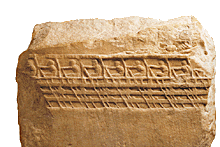|
If the hallmarks of the Classical
Athenian oikos were
insularity, hierarchy and division of labour, the city itself,
the polis, was dominated by egalitarianism and a strong feeling of
openness. There was noticeable tension during this period between oikos
and polis (as has often been pointed out), and outward
signs of this tension were a staple of Greek tragedy.
|
 |
The experience of the wars against the Persians was something
that did much to shape the development of the city of Athens
during the Classical period. The Persian Wars set off a chain
reaction, where cause and effect, conscious action and reaction,
'domestic' and 'foreign' are impossible to disentangle.

Arguably the chief consequence of the Persian Wars was that thanks to its
success in military encounters, the navy's importance to the city was recognized.
Athens' naval force was decisive for maintaining her authority over her allies
in the Delian League. This enabled the city to flourish economically and her
citizens to win glory and honour through the city. At the same
time, the importance of the fleet improved the status of the thetes
- the small peasants and labourers. What they demanded was more civic
rights. They got them - after the Persian Wars - lost
them when democracy was overthrown in 403 B.C., and then got them back again
after a struggle.
|
So we can see a shift in the relative
importance of oikos and polis, given that in this
context (but in no other) all citizens were equals.
Certain features of the polis were the result of its
development, and of broadening the right to participate in
direct political processes. Among these features may be mentioned
an upsurge in the number of slaves, and the arrival in droves of
the foreigners known as 'metics'. What the metics wanted was
a chance to exploit the many economic and cultural opportunities
Athens offered. We can see why Thucydides, through Pericles,
described Athens as 'the school of all Hellas'.
|
|
| introduction |
oikos |
polis |
|
Classical
period |
| Note: |
Click on the icons for enlargements and explanations.
Underlined links lead to related texts; those not underlined ones are an explanatory glossary.
|
|



